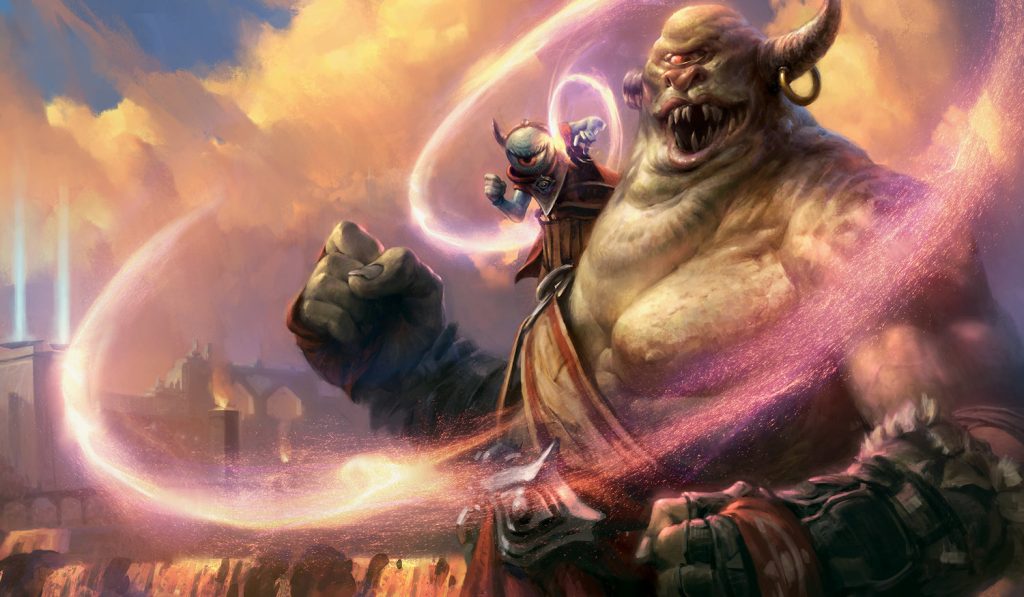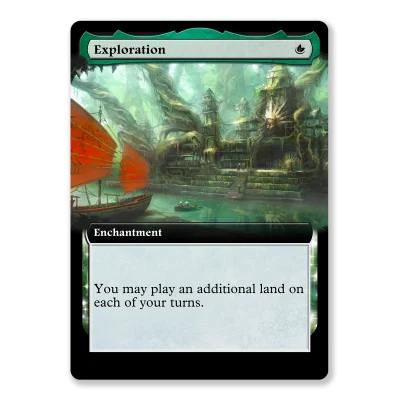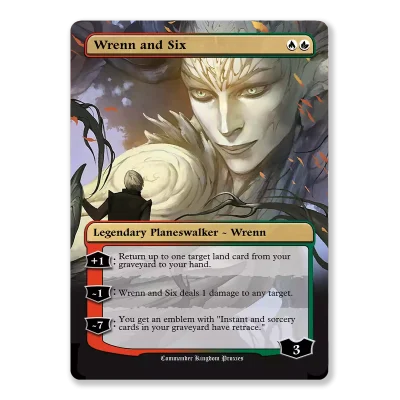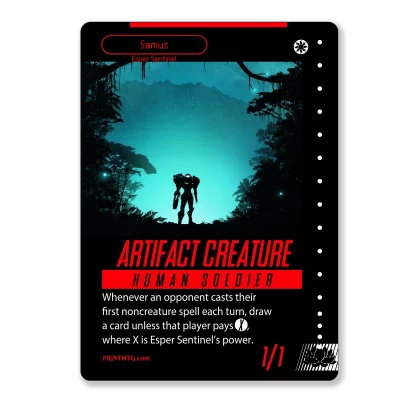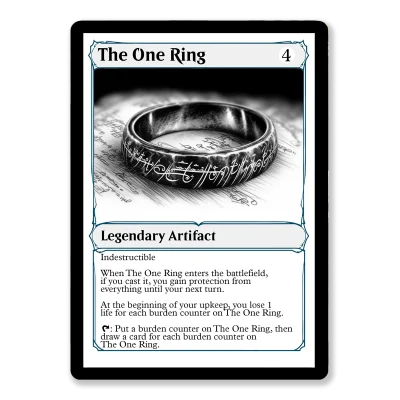Magic: The Gathering embraces several playstyles that appeal to different types of players, whether they are competitive ‘Spikes’ aiming for challenging heads-up matches, or casual card-slingers looking to relax with a friendly game of Commander. Two-Headed Giant (2HG) falls somewhere squarely in the middle, but there’s a catch: You need a partner.
If you’ve ever attended a Magic prerelease event at a local game store, you’ve probably noticed a scheduled advertisement for Two-Headed Giant events. While this variant can be played as an add-on to any format, it’s the perfect prerelease event for players looking to explore everything a new set offers with a friend.
What Is a Two-Headed Giant in MTG?
Two-Headed Giant (2HG) in Magic: The Gathering is a multiplayer format where players form teams of two, sharing a combined life total of 30 and taking their turns simultaneously. Unlike other resources, the life total is the only shared element between team members, with each player managing their own deck, hand, and board state. The format emphasizes teamwork and strategy, allowing players to block attacks targeting their teammate or planeswalkers controlled by their team. It’s a unique way to enjoy MTG with a friend, combining individual skill with cooperative strategy.
In 2HG, each team has a combined life total of 30; any damage dealt to either player is deducted from the team’s life total. The first team to reach zero loses, so it’s a group effort; if your partner dies, you lose.
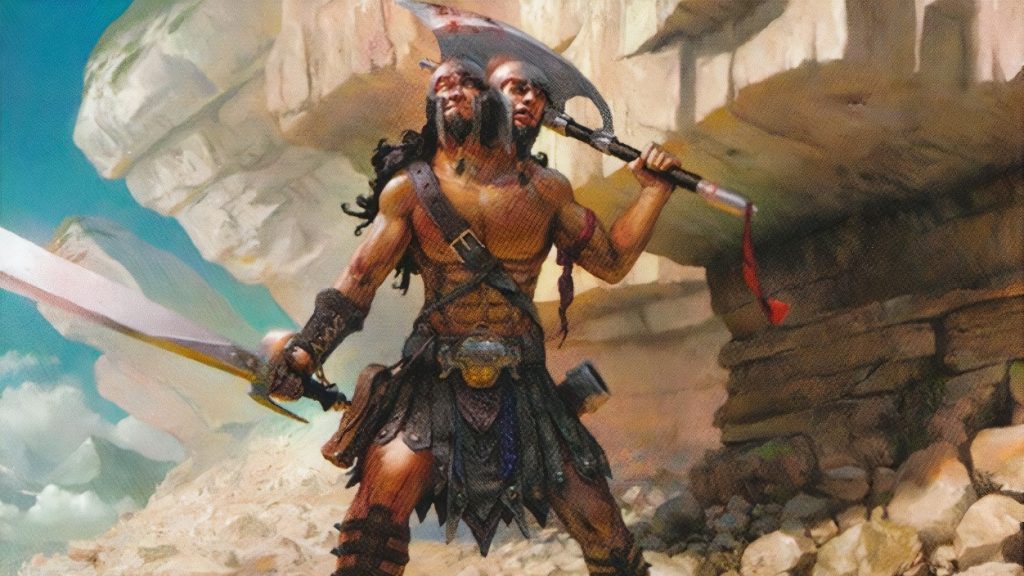
What Are the Rules for Two-Headed Giant?
Deckbuilding restrictions are the same as they would be in any one-on-one event. If you’re playing a 2HG Sealed event, you and your partner should receive your own set of packs, but your entire Sealed pool is shared between your team, and you’ll build two decks from the combined pool of cards. This leads to more powerful individual decks than your usual Sealed events.
Each team starts with 30 lives, each player draws a seven-card starting hand, and each player is allowed to take one free mulligan independent of whether their partner keeps or mulligans. This isn’t technically a multiplayer format, so the team that plays first skips their first draw step, but the team that plays second will draw on their first turn.
Each player on a team works through the steps and phases of their turns simultaneously. You and your partner conduct your draw phase, declare attacks, end the turn, and so on, all at the same time. Partners can block for one another, but mana, libraries, hands, graveyards, etc., are not shared. You can confer with your partner about your cards, which are yours.
Unlike most formats, 2HG is played as a best-of-one match since games are long and grindy. There is no second or third game in the match and no relevant time for sideboarding. Also, while one-versus-one matches extend for five additional turns after the round timer ends, 2HG matches are only allotted three extra turns when time is called.
Since there’s no sideboard, you should consider main-decking some artifact or enchantment hate, especially if those are themes of the format!
To Each Their Own
The exact rules text on certain cards might change the way those cards function in 2HG, compared to how they normally work in one-on-one matches. Be on the lookout for words like ‘each opponent,’ ‘you,’ ‘target player,’ ‘target opponent,’ and so on. The rules text on any given card (or its Oracle text if it differs) should be taken literally.
For example, a card like Thermo-Alchemist is a classic 2HG all-star. Since it deals one damage to each opponent, it’s actually dealing two damage to the opposing team when activated. Another example: Bad Deal affects each player differently; if you cast the spell, you draw two cards, both opponents discard two cards, and each team loses four life.
Because of the way some text behaves in the format, a card like Fraying Omnipotence will simply end the game in an immediate draw, since both teams’ life totals will become zero at the same time. In the case of a mid-game draw, players simply shuffle up and restart the match. Don’t play Fraying Omnipotence in 2HG unless you want to annoy everyone around you.
Watch out for effects that can benefit your partner. For example, a card like Fertile Ground can enchant their land and give your partner extra mana!
Technicalities
Sideboards rarely matter in best-of-one games, but each player technically has a sideboard in 2HG. During deckbuilding, players assign any remaining cards outside their main decks to one player, and those assigned cards make up their sideboard. This only matters with effects like Wish that pull cards ‘from outside the game,’ which in this case means from the Wish-player’s sideboard.
It’s not normally relevant, but when declaring an attack in 2HG, each attacking creature is assigned to a specific opponent (or planeswalker). Most players will shortcut this process by simply attacking the opposing team in general, but some cards make this matter more than usual.
For example, suppose an opponent controls Sandwurm Convergence, which specifically says that player can’t be attacked by flying creatures. That effect only applies to the enchantment’s controller, not the team, so flying creatures can simply be directed at the other opponent for the same result. This makes cards like Ghostly Prison and Sphere of Safety virtually useless in 2HG.
Two-Headed Tips And Tricks
If you’re new to the format, you might have to reconsider some of the instinctual tendencies that come with normal gameplay. The most obvious strategic change is that there’s an entire extra deck and player that influence your decisions. Discuss everything with your partner and make sure they’re on board before you take any meaningful game actions.
Common wisdom for modern-day Limited is that you always choose to go first when given the choice, though going second offers a greater advantage in 2HG. You have a higher life total than usual, so you’re more insulated from fast starts than you’d normally be. Unless your team is hyper-aggressive, that extra card from being drawn is a huge late-game advantage.
Many players split their best cards into two separate decks: one control deck with mostly removal and counterspells, and the other with the best creatures and combat tricks. Do not do this. Build two well-rounded decks with good curves and good interaction in both; the split approach will leave your team with a nonfunctional strategy if one partner’s deck happens to stumble.
Missing early lands is a death sentence in 2HG! Play at least 17 lands and mulligan risky hands that are too light on mana sources.
Format Variants
While 2HG is almost exclusively played as a sanctioned prerelease event, this playstyle can be treated as an add-on to just about any other format. 2HG Draft is available at some stores, in which partners simultaneously take picks from the same booster packs and build two decks out of the combined pool. The teams then face off against one another.
If you’re feeling bold, you might even convince your normal playgroup to try 2HG Commander. This often results in very swingy matches that favor the team that gets off to an early lead and removes the political aspects of Commander, but it’ll definitely be fun for someone out there.

